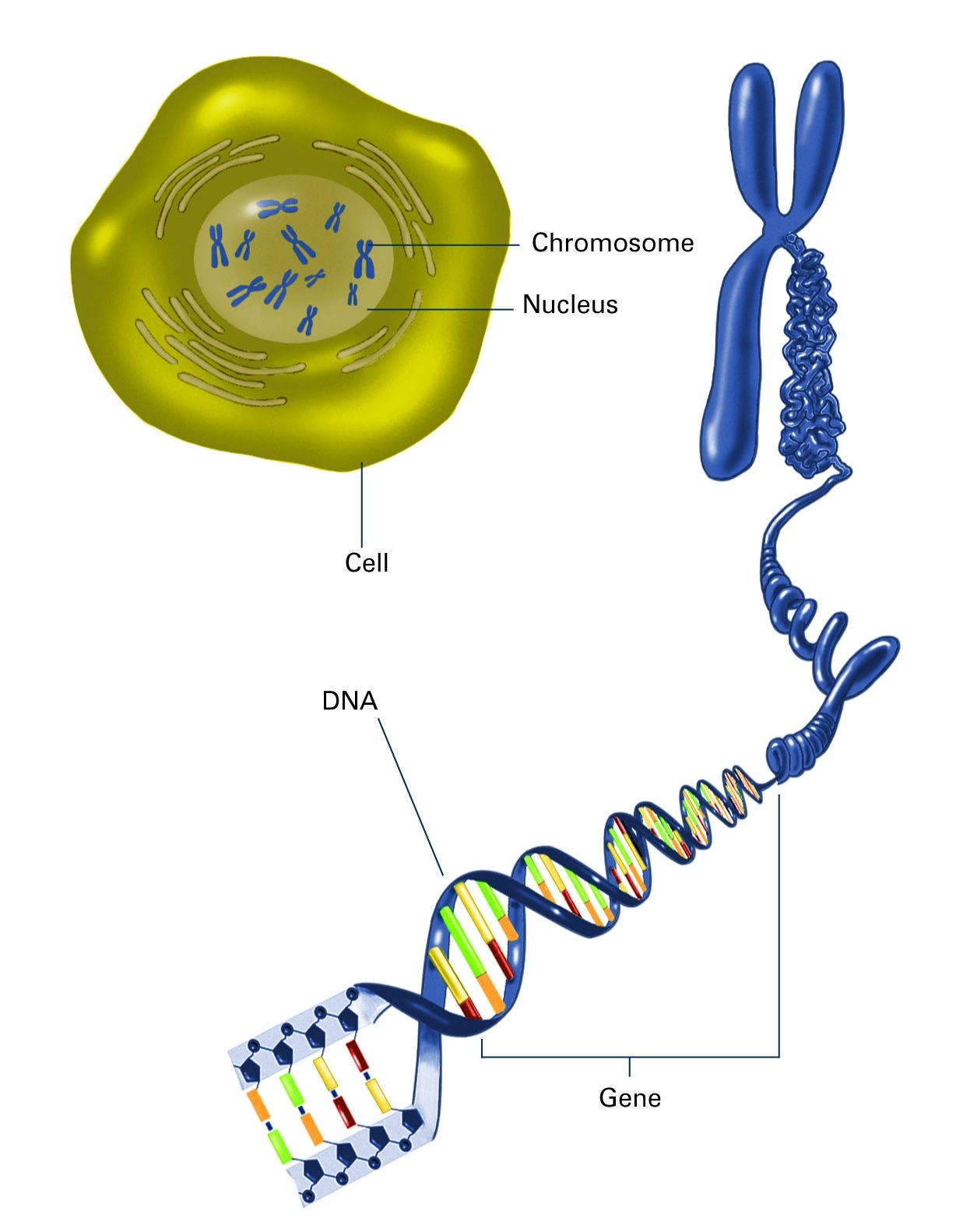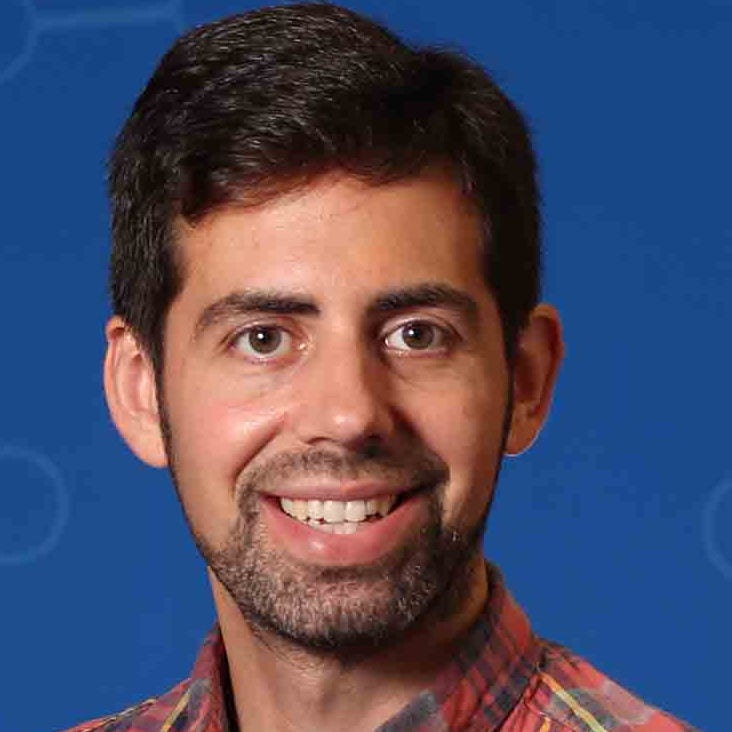Your gift is 100% tax deductible
Chromosome-Hoarding Ovarian Cancer Cells May Help Treatment
Using new CRISPR tools, researchers learn extra chromosomes promote tumor growth and paradoxically may help some treatments work.
The Challenge
The human body is a complex organism made up of trillions of living cells that continuously duplicate and divide to help the body grow and develop. When a normal cell divides as it should, chromosomes copy themselves and separate symmetrically into two new cells. Most cells have 23 pairs of chromosomes, which are made up of DNA, carrying genes that are tightly coiled around proteins. A cell with 23 pairs of chromosomes is called diploid.
When cancer cells divide, though, most new cells end up with extra numbers of whole chromosomes or parts of chromosomes. These cells are called aneuploids.
About 90% of tumors and 75% of blood cancers are aneuploid. It’s rare for normal cells to have extra chromosomes.
Scientists have known for more than 100 years that these extra chromosomes exist, but questions remain about how aneuploidy helps tumors survive.
Does aneuploidy cause cancer to develop and grow, or does cancer cause aneuploidy?
Can we successfully treat cancer with certain drugs by destroying aneuploid cells?
More research is needed to answer these questions to help scientists better understand the relationship between aneuploidy and cancer and its potential to affect a patient’s response to cancer treatment.
A key challenge has been that gene editing tools have been limited to manipulating only a single gene when aneuploidy affects 100s of genes at the same time.

The long, stringy DNA that makes up genes is spooled within chromosomes inside the nucleus of a cell.
Photo credit: National Institute of General Medical Sciences
The Research
American Cancer Society (ACS) Research Scholar Jason M. Sheltzer, PhD, leads a team of scientists at Yale University School of Medicine in New Haven, Connecticut who are shedding light on why cancers become aneuploid, how these extra chromosomes affect tumors’ growth and spread, and how aneuploidy might be used to develop new cancer treatments.
Sheltzer recently published an article in Science about his team’s investigations of aneuploid cells using their new CRISPR gene editing tool. They studied aneuploidy in ovarian, melanoma, and gastric cancer cell lines, comparing cells with and without extra chromosomes.
“Scientists have had little success in determining whether cancer cells are fueled by abnormal chromosomes,” says Sheltzer.
For a long time, we could only observe aneuploidy because it was very difficult to manipulate. In this study, we used our newly developed CRISPR/Cas9 genome editing tool, called ReDACT, which allows us to add, delete, or manipulate aneuploidy in cells by snipping out DNA at specific locations and inserting new sequences of genes.”
Jason Sheltzer, PhD
Yale University School of Medicine
ACS Grantee

In this study, Sheltzer focused on chromosome 1. As the largest chromosome, chromosome 1 carries almost 10% of the total number of genes. More specifically, his team focused on an extra copy of the longer arm (called q) of chromosome 1. Chromosome 1q aneuploidy is in about 25% of all ovarian tumors.
The scientists developed a new set of CRISPR chromosome engineering tools called ReDACT (Restoring Disomy in Aneuploid Cells using CRISPR Targeting). With ReDACT, they were able to eliminate the extra, pieces of the chromosome 1 long arm in ovarian cancer, stomach cancer, and melanoma cell lines.
That removal caused the cells to lose their ability to form tumors.
They found that aneuploidy causes cancer to develop and grow and that certain cancers are “addicted” to aneuploids, meaning the cancers rely on the extra chromosomes to grow and survive.
This finding that some cancer cells may have “aneuploid addiction,” may represent an exciting therapeutic vulnerability in cancer. Here’s why:
- The longer arm of chromosome 1 carries a gene (UCK2) that codes for a protein (UCK2) that can activate certain drugs.
- Aneuploid cells have a third copy of that gene, so they generate more of the active, drug-sensitive versions than normal cells do.
- When researchers tested two of the drugs on cancer cells, they found that the drugs killed a larger percentage of cells with aneuploidy in the long arm of chromosome 1.
- Aneuploid cancer cells treated with those drugs stopped dividing into aneuploid cells, meaning they had less potential for becoming cancerous.
Why It Matters
Scientists can use Sheltzer’s ReDACT gene editing tool to further explore the consequences of aneuploidy in development and disease and to target cancer in the future.
His finding that some cancer cells may have “aneuploid addiction,” may represent an exciting therapeutic vulnerability in cancer beyond just the longer arm of chromosome 1. Chromosomes contain hundreds or thousands of genes, and aneuploidy is prevalent in all types of cancer, so aneuploids as a new target could greatly expand the number of potential targeted therapies to test.
Sheltzer and his team plan to increase the impact of their work by doing similar studies for all chromosome and more cancer types. This study may lead to new therapeutic discoveries that could help move Sheltzer’s work into animal models, evaluation of additional drugs and other aneuploidies, and collaborations with pharmaceutical companies to develop clinical trials.



